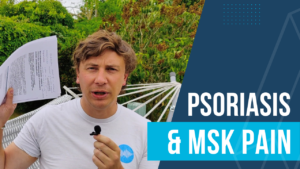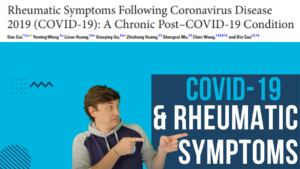Intro
This is a blog I have been meaning to write for a while, embarrassingly Gout occupies just the one slide on my “Recognising Rheumatology” courses despite it being the most common Rheumatological condition. I was lucky enough to watch a webinar by Dr James Prior which brought gout into focus and updated some facts for me I will share with you in this blog.
Gout diagnoses areon the increase, likely due to a combination of greater awareness of the condition in primary care and an increase in multimorbidity amongst the population. This coupled with the increasing first contact roles for Physios means it is definitely a condition to be aware of.
As usual feedback is greatly appreciated and any further reading for me please send it my way!
PLEASE REMEMBER – THIS BLOG IS NOT A REPLACEMENT FOR CLINICAL REASONING, IF YOU ARE UNSURE GET ADVICE
What is Gout? (What’s it all aGout?)
Gout is a type of inflammatory arthritis, it is characterised by acute attacks of pain, redness, swelling and heat of the joint. Onset of symptoms is usually during the night and will peak after 12-24 hours. The pain is severe and many attend A+E with the symptoms, gout has overtaken Rheumatoid Arthritis as the Rheumatological condition with the most hospital admissions per year.
Aspiration of the joint often reveals urate crystals which is what sets off the synovitis. Either an excess of Urea in the body (90%) or a reduced ability to produce Urate which metabolises the Urea causes the formation of these crystals within the joint.
Who Gets Gout?
Gout prevalence is roughly 2.5% of the population with higher incidences in the North West of England and Wales. 1/14 men and 1/35 women are affected, it is important to note that onset prior to puberty in men is unlikely and onset prior to menopause in women is unlikely. The joint most affected by gout is the 1st MTPJ (big toe) which accounts for 75% of cases.
There are a number of associated co-morbidities including, diabetes, cardiovascular disease, stroke, obesity and poor kidney function. There have been associations with dietary intake, most strongly associated is high alcohol and high red meat intake.
What should we do?
If this is the first attack then advise the patient to go their GP, initial management of the flare is with NSAIDs and Colchicine followed by a titrating dose of Allopurinol. Physiotherapy in this early stage is of minimal benefit. Education around the condition and symptomatic relief where possible (ice, NSAIDs).
If the patient is already on medication, discuss with them the process. It is very common for a flare to be triggered by starting Allopurinol. It is also necessary for the Allopurinol dose to be titrated upwards until control is gained, ensure this happened in this case. Most management will be within primary care however Rheumatology input is of benefit especially in the early stages of the disease and in refractory cases.
Investigating
Gold standard investigation for gout is joint aspiration to assess for the crystals. Blood testing for uric acid levels is useful in the acute and the chronic stage although it is worth noting that in a proportion of cases this blood testing will be within the normal ranges.
As usual thanks for reading and don’t forget to check out my other blogs. Sign up for the Rheumatology.Physio newsletter for further resources and updates!
Related Blogs
An Introduction to Rheumatoid Arthritis for Therapists
Inflammatory Arthropathy Bloods
References
Book by Drs Al-Sukaini, Azam and Samanta https://www.amazon.co.uk/Rheumatology-clinical-handbook-medical-students/dp/1907904263/ref=sr_1_1?ie=UTF8&qid=1538037053&sr=8-1&keywords=rheumatology+a+clinical+handbook
Dr Priors Webinar (which was excellent by the way, part of a series by Lily and BSR which are free https://www.rheumatology.org.uk/events-learning/webinars )


